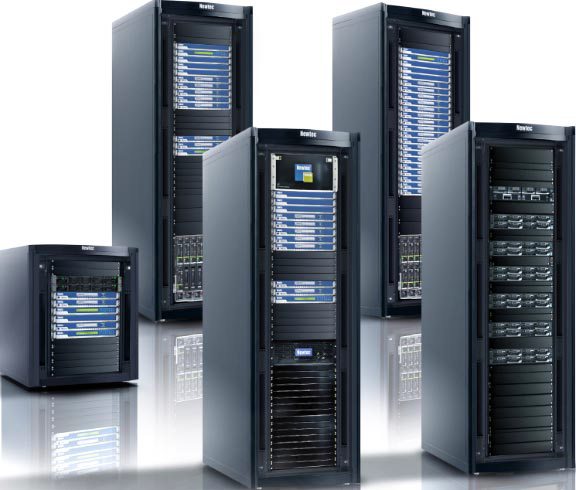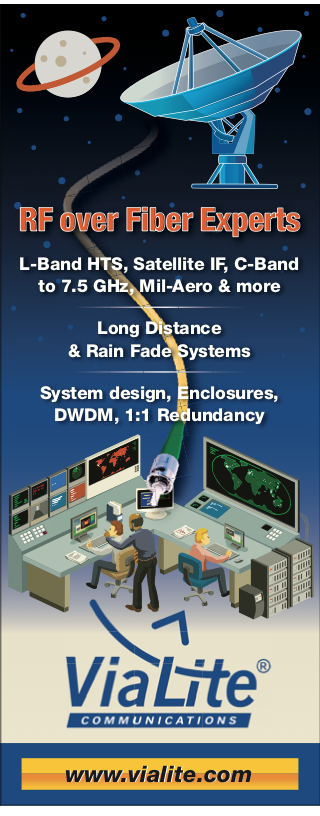Kevin Steen is the Chief Executive Officer of ST Engineering iDirect, a global leader in IP-based satellite communications. Steen joined ST Engineering iDirect in 2010 and has served as a key member of ST Engineering iDirect’s leadership team, where he has been responsible for charting the company’s strategic growth across sales, operations and business development. Steen has led a major effort across ST Engineering iDirect and its global partner base to advance the role of satellite technology in the end-to-end telecom network; identify new market opportunities for satellite communications, and collaborate with ST Engineering iDirect’s ecosystem to co-develop industry-leading technology. Steen has more than 20 years of experience in technology business development and operating executive positions. Prior to joining ST Engineering iDirect, he was Vice President of Mergers and Acquisitions at SAP Americas, where he participated in strategic M&A activities. He holds an MBA from Northeastern University and a Bachelor of Science degree from the University of Denver. He sits on several boards in a financial and advisory capacity.
Good day, Mr. Steen. What services and products does your company provide to the commercial market segments?

Kevin Steen (KS)
ST Engineering iDirect provides products and solutions to a diverse range of different commercial sectors including the mobility, media and broadcast, cellular backhaul and trunking, enterprise and broadband and IoT markets.
Our products are built around flexibility, performance and efficiency and enable our customers to deploy diverse services with the lowest cost of ownership providing them the ability to grow and adapt to their evolving business missions. Through our comprehensive portfolio, our aim is that all satellite service providers, big and small, can seize the opportunity today to fulfill their ambitious business objectives. The merger of iDirect and Newtec into ST Engineering iDirect has resulted in an assimilation of the two companies’ product lines under a new banner. The integration itself is going well and the synergies between the two companies are more apparent than ever.
The acquisition was based very much around scale, bringing two companies together and offering our customers a technology partner whose shoulders they could stand on and leverage the scale of the combined organization.
Both iDirect and Newtec had similar strategies. While we were competitors, each company had strengths where the other company was not as strong. Therefore the combination was highly complementary as there were not a great deal of technology overlaps. Both companies were already moving toward greater platform virtualization and shared a common vision for the future of satellite communications and customer enablement.
Over the next few years, we will shift our technology from hardware-based to software-based solutions, enabling further integration and more rapid feature development. Then, over the next three to five years, we will work toward full convergence through a common, cloud-based, multi-orbit, multi-access-technology platform. In this way, we aim to create a unified technology strategy. We’re committed to developing a next generation platform that will help customers fulfill their greatest ambitions.
Would you please explain the benefits to commercial SATCOM providers of your company’s lead products… Evolution®, Velocity® and Newtec Dialog®.
KS
More than ever, satellite service providers, network operators and broadcasters need innovative business models, strategies and network infrastructure which adapt easily to change. If these companies want to play a significant role in the entire satellite communications ecosystem, they have to win ground in their core markets and increase profitability.
The Dialog platform is a scalable and flexible multiservice satellite communications platform and secures the future of operators, giving them the power to offer a variety of mobile and fixed services while making hassle-free decisions on which technology to use. Dialog provides the scalability and flexibility required to run successful, very efficient satellite networks. With its wideband DVB-S2X and its award winning MxDMA return technology it offers highly efficient, very high data rates for high-end markets while maintaining unprecedented service agility to large networks.
ST Engineering iDirect Evolution® is a proven satellite communications platform engineered to deliver high quality connectivity across large fixed and mobile applications. It’s a scalable TDMA based platform that is ideal for small to large networks with diverse market needs ranging from basic Internet and VoIP, to highly sophisticated applications such as video conferencing and digital signage in fixed and mobile environments.

The platform also consists of defense-grade products and capabilities that allow defense and government organizations to embrace the growing complexity of deploying and managing global networks for mission-critical communications. Its versatile portfolio features advanced mobility and security including FIPS 140-2 level 3 and TRANSEC for high data and video connectivity.
Velocity is specifically designed to enable HTS operators to deliver a managed service model to capitalize on the benefits of these new satellites. With Velocity, satellite operators are able to deploy a single, modular and scalable platform capable of supporting a range of terminals.
This platform is designed specifically around the unique attributes of HTS spot beam architecture and helps support the ability to offer fully or partially managed services on a large scale. With this, satellite operators can quickly address market requirements for fixed and mobile applications with maximum flexibility and the lowest level of risk.
KS
ST Engineering has more than 30 years of experience in the Media and Broadcast market. We offer a wide variety of products for distribution and contribution as well as turnkey broadcasting solutions. With an 80 percent market share in the DTH market, we are the leader in modulators for this sector. Our large installed base proves that end-users and professional users benefit from our products and technologies.
We support ‘traditional’ DTH broadcasting and though markets such as Europe and North America have matured, there is still growth in Asia, Africa and Latin America.
The rise of OTT raises an important opportunity for satellite and we see it playing a critical role in the distribution of OTT content. Operators can use OTT as an alternative to traditional transport stream broadcast, addressing Quality of Experience issues, including latency, buffering, bitrate and video quality limitations. The solution involves converting unicast streams into multicast so that content can be delivered over satellite to a local satellite-to-OTT gateway.
Satellite enables efficient delivery over vast geographical areas; is highly scalable; addresses increasing resolutions and bitrates; is available to remote sites and can be used to offload congested terrestrial backbones. Its bi-directional communication also allows operation of Digital Rights Management (DRM) and Content Delivery Network (CDN) Analytics to optimize service providers’ operations. By deploying multicast Adaptive Bit Rate (ABR), satellite operators can deliver all types of OTT services, including live Video On-Demand (VOD), catch-up and start-over TV.
Another important aspect of the broadcast business is Outside Broadcast (OB) and Satellite Newsgathering (SNG). In fact, the OB, or SNG, truck has become increasingly sophisticated as time has moved on, enabling broadcasters and news agencies to get to the scene rapidly, to set up and start broadcasting within minutes and to deliver their broadcasts back to the studio via a contribution link. Along with our partners, we enable the fast conversion of these trucks to All-IP, enabling them to use multiple networks, such as 3G and 4G or Ka- and Ku-band satellite so that they may use the best and most cost-effective method to connect to the Internet, send email, and use the whole range of IP services without the need to establish a link through a telco which is time consuming and expensive.
Through our key broadcast products — such as the MDM3310, the MCX7000, M6100 and the multiservice Newtec Dialog platform — we are best placed to serve the diverse needs of the broadcast sector.
Is ST Engineering iDirect actively pursuing maritime and airborne connectivity solutions?
KS
Yes, absolutely and these are key to our mobility offering. Obviously, the COVID-19 outbreak has had a major impact on both, but they will come back. It will take a bit longer, but both will come back.

If we take the aero market first, the most important requirement is that country regulations are extremely clear so that people are comfortable getting back on a plane. I think it’s the same for the cruise market. This will take a little longer and people’s confidence needs to be re-built before they decide to get back on a cruise ship.
KS
ST Engineering has more than 30 years of experience in the Media and Broadcast market. We offer a wide variety of products for distribution and contribution as well as turnkey broadcasting solutions. With an 80 percent market share in the DTH market, we are the leader in modulators for this sector. Our large installed base proves that end-users and professional users benefit from our products and technologies.
We support ‘traditional’ DTH broadcasting and though markets such as Europe and North America have matured, there is still growth in Asia, Africa and Latin America.
The rise of OTT raises an important opportunity for satellite and we see it playing a critical role in the distribution of OTT content. Operators can use OTT as an alternative to traditional transport stream broadcast, addressing Quality of Experience issues, including latency, buffering, bitrate and video quality limitations. The solution involves converting unicast streams into multicast so that content can be delivered over satellite to a local satellite-to-OTT gateway.

Satellite enables efficient delivery over vast geographical areas; is highly scalable; addresses increasing resolutions and bitrates; is available to remote sites and can be used to offload congested terrestrial backbones. Its bi-directional communication also allows operation of Digital Rights Management (DRM) and Content Delivery Network (CDN) Analytics to optimize service providers’ operations. By deploying multicast Adaptive Bit Rate (ABR), satellite operators can deliver all types of OTT services, including live Video On-Demand (VOD), catch-up and start-over TV.
Another important aspect of the broadcast business is Outside Broadcast (OB) and Satellite Newsgathering (SNG). In fact, the OB, or SNG, truck has become increasingly sophisticated as time has moved on, enabling broadcasters and news agencies to get to the scene rapidly, to set up and start broadcasting within minutes and to deliver their broadcasts back to the studio via a contribution link. Along with our partners, we enable the fast conversion of these trucks to All-IP, enabling them to use multiple networks, such as 3G and 4G or Ka- and Ku-band satellite so that they may use the best and most cost-effective method to connect to the Internet, send email, and use the whole range of IP services without the need to establish a link through a telco which is time consuming and expensive.
Through our key broadcast products — such as the MDM3310, the MCX7000, M6100 and the multiservice Newtec Dialog platform — we are best placed to serve the diverse needs of the broadcast sector.
Is ST Engineering iDirect actively pursuing maritime and airborne connectivity solutions?
KS
Yes, absolutely and these are key to our mobility offering. Obviously, the COVID-19 outbreak has had a major impact on both, but they will come back. It will take a bit longer, but both will come back.

If we take the aero market first, the most important requirement is that country regulations are extremely clear so that people are comfortable getting back on a plane. I think it’s the same for the cruise market. This will take a little longer and people’s confidence needs to be re-built before they decide to get back on a cruise ship.
However, that being said, there are other maritime markets that have been strong throughout such as the fishing market and cargo shipping. The transportation of goods across the ocean has actually remained very strong so those maritime markets will bounce back very quickly. It will be all about establishing whatever the new ‘normal’ is for the crews. We are seeing airlines with entire fleets grounded, but connectivity is going to be required as the industry slowly starts to move again. People still want to be connected. They still want an at-home experience while they're on a cruise ship or while they're on a plane. Both will be back but it will just take a little bit longer than the other markets.
While aircraft and vessels have been grounded and in dock, aero and maritime service providers have used the time to upgrade fleets or to equip them with the latest technologies. To give an example, we are currently helping Speedcast to migrate to our Newtec Dialog platform to enable them to meet the demands for higher bandwidth and even during the COVID crisis, we have worked with the team to facilitate remote installations so that they have been able to continue with the process despite no engineers being able to be present. To date, 72 ships and 112 antennas have been converted.
Why should a prospective customer consider ST Engineering iDirect as a preferred solutions provider?
KS
ST Engineering iDirect is the technology partner on which our customers can rely both today and tomorrow. We have the vision to anticipate market trends. We have the scale required to succeed in our transforming market which is one with a wider breadth of integrated capabilities and offerings. We will enable our customers to take advantage of unanticipated opportunities in the market and leverage their investment in our platform across multiple market segments.

We are creating a leading platform to enable us to become the preferred solutions provider for space-based telecommunications services. That means offering a variety of business and operational models. We also aim to develop leading products and turnkey solutions that span from baseband to converged virtual infrastructure. All of our integration efforts, new strategies and innovations have the ultimate goal of better serving our customers’ needs as the industry evolves.
Innovation is in our DNA and we are constantly looking at how we can push that innovation further so that we can take our customers on the journey to the future which is looking bright and exciting.
What may we expect ST Engineering iDirect to reveal over the next few months?
KS
We made some exciting announcements at Satellite 2020 earlier this year. We introduced our MxDMA MRC (Multi Resolution Coding) physical layer advancements and this cutting-edge technology is just one example of why we brought the two companies together in the first place. MxDMA is all about throughput and efficiency. With MxDMA MRC we are building upon the well-established, award winning MxDMA technology and it will answer the market’s call for unprecedented service agility, extending the availability of MxDMA to very large networks and expanding the applicability and use of the technology to include a full spectrum of use cases.
 The MDM3310 satellite modem.
The MDM3310 satellite modem.
We also announced our IoT Platform-as-a-Service (Paas) offering to our customers. We're providing them with the ability to offer satellite-based connectivity for the industrial Internet of Things (IoT) market.
The new solution will enable its service provider partners the ability to offer satellite-based connectivity for the industrial Internet of Things (IoT) market cost-effectively and rapidly. The solution utilizes a family of compact, lightweight terminals that feature a tightly-integrated satellite modem and flat-panel antenna design in Ka-band or Ku-band variants. The initial IoT platform-as-a-service offering will include Low Data Rate (LDR) and Medium Data Rate (MDR) service for deployment within both fixed and mobile environments.
We're also continuing with our very successful rollout of the iQ LTE unit that combines both cellular and satellite in one box, enabling customers to deliver reliable and persistent communications across a wide range of use cases. That's a newer offer in the market for us.
Longer term, we are very much focused on our virtualization strategy and cloud-based computing that will enable us to deploy our technology more cost effectively and from a virtualized perspective. We will be much more scalable and robust by taking advantage of cloud computing capabilities and interfacing seamlessly with telco networks, ultimately offering platform-as-a-service and new commercial offerings.
It’s these developments that will enable our customers to grow in areas where new entrants will be able to come into the market and offer services based on our platform.
How has ST Engineering iDirect been supporting its customers during the recent COVID-19 crisis?
KS
It’s been a completely unprecedented and extremely unfortunate time. A lot of people's families and lives are affected. It’s having a profound impact on our industry as previously mentioned.

We've been pulling out all the stops to support our customers, including, for example, applying additional resources to enable remote installation. It may take us a little longer and it may be more challenging and take place at strange hours of the day and night, but the team is committed.
We’re also offering remote training to keep our customer’s skills current and to offer them new skills. We’ve been delighted at the response to this training. Our support centers are open 24 hours a day 7 days a week. We offer ‘follow the sun’ capability in Virginia, Belgium and Singapore so our customers are very thankful that we are there to keep their networks up and running.
Our manufacturing center in Belgium has remained open and we have been compliant with the local laws in order to keep our people safe. Importantly, we’ve been able to support our customers that are still expanding their networks and need new products or additional products.
We've implemented very careful social distancing regulations but we've kept the factory open to the delight of many of our customers because they rely on us to provide them the products they need to run their business.
What do you believe are the most significant challenges that need to be addressed within satellite industry?
KS
In addition to COVID, there are also other challenges that exist that were around before the pandemic struck. The industry has to continue drive down cost. Satellite is still viewed as the expensive medium but, with the advent of all the new constellations coming online, that dynamic is fast changing and the price per bit is tumbling.
We’re also looking forward to seeing progress in the flat panel antenna world because these antennas will be integral to the advancement of SATCOMs in the mobility market and to unlocking many of the new constellations allowing for new applications. Developers face a significant challenge in terms of the complexity of engineering these FPAs and making them affordable.
Then there’s the challenge of interoperability and the transformation of the industry in general that will see satellite considered as a mainstream access technology that is compatible with terrestrial networks. Though there have been significant setbacks in the deployment of new LEO constellations, this is going to happen. It’s important to stress that the ecosystem needs to be in place to enable the LEO constellations. That’s exactly what we are working on. We are enabling the seamless ability to jump between LEO and GEO and MEO through traffic steering which is a key technology in the ground segment.
Finally, there’s 5G. We believe that 5G will dramatically change how satellite is integrated to achieve full interoperability within the end-to-end 5G network. This creates the ultimate opportunity for the satellite industry to break out of its niche and for satellite service providers to offer a much wider range of services and empower end users anywhere in the world with consistent, reliable, high-performance experiences.
Satellite must function as an integrated part of the “network of networks” to leverage new use cases and become a component of the unified access layer. However, to successfully deploy the full potential of 5G, mobile network operators (MNOs) need satellite to offload network congestion, among other use cases.
That’s why the satellite industry, including ST Engineering iDirect, is transforming the fabric of our network to better align with 5G standards, making it easier for MNOs to adopt and sell satellite services in the 5G future.
www.idirect.net/




